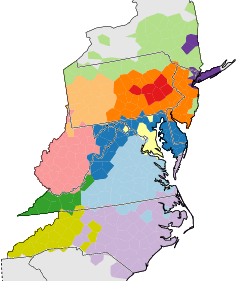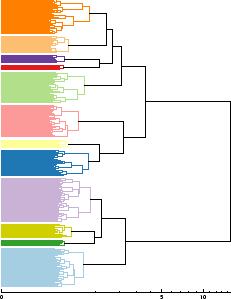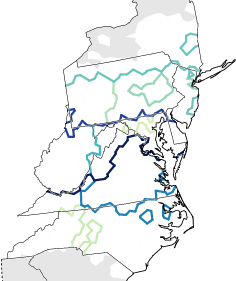ClusteringHierarchical clustering is a method to join similar elements into increasingly larger groups, until only a few groups are left. There are several methods to decide the steps to take, to decide in what order this joining is done.Ward's method (Minimum Variance) results in clustering into a number of large groups. There are no single elements left out. This makes it a suitable method for making dialect maps. It gives a reasonable first impression. (Image top right.) LimitationsClustering is susceptible to noise in the data. This may effect the order in which small clusters are joined into larger clusters. It may also effect the exact location of soft cluster borders.The choice of the number of groups is arbitrary. A cluster map shows no distinction between hard borders and soft borders. In fact, some borders in the dialect map may not be true dialect borders at all, but just a division through the middle of a large transition area. ExtensionsA dendrogram shows each step taken in the clustering process. Comparing a dendrogram with a cluster map informs you about the relative importance of each cluster border. (Image middle right.)Assigning colours to cluster borders in the order of which they are formed shows you which are the most important dialect borders. (Image bottom right.) |

|

